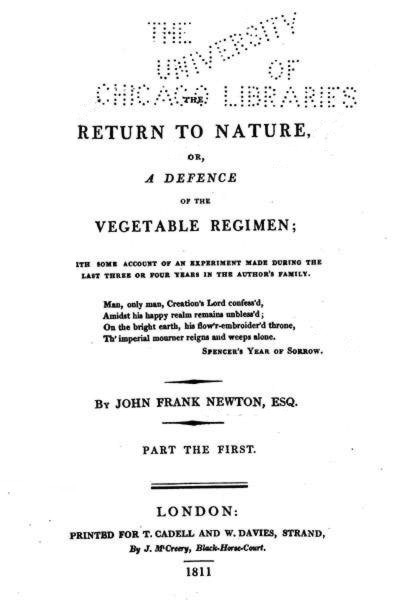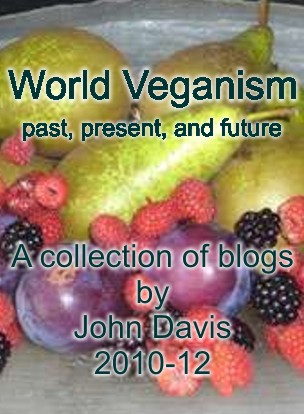January 25,2012
John Frank Newton was a pivotal character in an extraordinary group of people who challenged almost every social convention of the rigid-minded early 19th century England.
He was born about 1770 and was educated at Harrow, one of two leading schools in the country. From there he went on to Christchurch College, Oxford, where he was friendly with the future Prime Minister, George Canning.
During one his college vacations, in the late 1780s, he went to the West Indies (Caribbean), where he said he met his parents for the first time since starting school as a child. They were running a sugar plantation, and Newton was shocked to be confronted by human slavery. He wrote to Canning urging him to oppose the slave trade when he went into politics, and there is indeed a later record of George Canning supporting abolition. (The Atlantic slave trade was banned by the British Parliament in 1807, but existing slaves in the Caribbean remained legal until abolition in 1833. The USA followed in 1865.)
 By 1807, John Frank Newton had become a patient of Dr. William Lambe in London. There seems to have been some earlier connection as Netwon's daughter was christened in 1804 in a small village just five miles from Lambe's home village, in the west of England.
By 1807, John Frank Newton had become a patient of Dr. William Lambe in London. There seems to have been some earlier connection as Netwon's daughter was christened in 1804 in a small village just five miles from Lambe's home village, in the west of England.
Lambe had been promoting his new diet consisting entirely of plant foods plus distilled water, and the whole Newton family adopted a version of this at their home in Grosvenor Square, London. In 1811 Newton published his book: 'Return to Nature, or a defence of the vegetable regimen', which was dedicated to Dr. Lambe, and attracted considerable interest across the country.
Newton also promoted the diet of plant food and distilled water, but took matters further in raising ethical issues about the use and treatment of animals, along with descriptions of his family life. In these pre-Darwinian times, the 'nature' of the title was the
Garden of Eden, and the family took this to the extent of leaving off their clothes, as well as the meat. Visitors reported being taken aback to see naked children disappearing as they arrived.
In 1812 Newton was holding a bonfire night party (old English tradition on November 5th), when he received a young visitor - Percy Bysshe Shelley, age 20, was a budding poet. He was sent round to Newton's house by William Godwin, a writer on social justice, and supporter of the French revolution. Godwin's wife, Mary Wollstencraft, was the author of 'A Vindication of the Rights of Women' in 1792 (yes, seventeen ninety two...). She died in childbirth in 1797 and their daughter, Mary, eventually eloped with Shelley, and went on the write Frankenstein. This was not an average family...
Shelley and his first wife, Harriet, had adopted the vegetable diet the previous year, whilst in Dublin, possibly from Newton's book, or perhaps from reading the original Greek and Roman writers, or both. He soon became a regular visitor to the Newtons' household in London.
Meanwhile, Newton's widowed sister-in-law, Harriet de Boinville, was running a similar household in what was then the village of Bracknell, near London. For a few months in 1813 Shelley moved into that large country house, along with a few others who were passing through, and established an early attempt at a 'vegan' commune. Most of what we know about it came from Shelley's friends who wrote biographies after he died young in 1822. Thomas Jefferson Hogg, his old university friend, recalled the events of 1813 (slighly edited for brevity):
"I conformed, not through faith, but for good fellowship. Certainly their vegetable dinners were delightful. Flesh never appeared; nor eggs bodily in their individual capacity, nor butter in the gross: the two latter were admitted into cookery, but as sparingly as possible, under protest, as culinary aids not approved of, and soon to be dispensed with. Cheese was under the ban. Milk and cream might not be taken unreservedly; however, they were allowed in puddings, and to be poured sparingly into tea, as an indulgence to the weakness of neophytes."
We have to remember that this was decades before the invention of margarine, and long before anyone in the West ever heard of tofu or soya milk, so the change cannot have been easy for them. But it was not just about health matters as Shelley's writings show us his concern for animals.
The group remained close for several years, William Lambe's daughter eventually marrying Mrs de Boinville's son, her daughter married William Godwin's young friend, and Godwin's daughter was Shelley's second wife, but they gradually scattered.
John Frank Newton moved to Weymouth, on the south coast of England, and died there in 1837. His book had been re-published in 1822, and exerted a considerable influence during the first half of the 19th century. We have no pictures of him or his family.
 John Davis
John Davis
